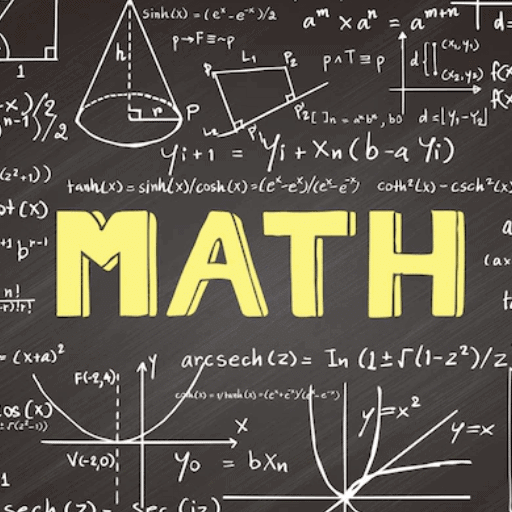Best Study Material for JEE Exam
JEE Exam > JEE Notes > Mathematics (Maths) Class 12 > NCERT Solutions - Exercise 13.1: Probability
Exercise 13.1: Probability NCERT Solutions | Mathematics (Maths) Class 12 - JEE PDF Download
| Download, print and study this document offline |
Please wait while the PDF view is loading
Page 1 NCERT Solutions for Class 12 Maths Chapter 13 – Probability Exercise 13.1 Page No: 538 1. Given that E and F are events, such that P (E) = 0.6, P (F) = 0.3 and P (E n F) = 0.2, find P (E|F) and P (F|E). Solution: 2. Compute P (A|B), if P (B) = 0.5 and P (A n B) = 0.32 Solution: 3. If P (A) = 0.8, P (B) = 0.5 and P (B|A) = 0.4, find (i) P (A n B) (ii) P (A|B) (iii) P (A ? B) Solution: Page 2 NCERT Solutions for Class 12 Maths Chapter 13 – Probability Exercise 13.1 Page No: 538 1. Given that E and F are events, such that P (E) = 0.6, P (F) = 0.3 and P (E n F) = 0.2, find P (E|F) and P (F|E). Solution: 2. Compute P (A|B), if P (B) = 0.5 and P (A n B) = 0.32 Solution: 3. If P (A) = 0.8, P (B) = 0.5 and P (B|A) = 0.4, find (i) P (A n B) (ii) P (A|B) (iii) P (A ? B) Solution: NCERT Solutions for Class 12 Maths Chapter 13 – Probability 4. Evaluate P (A ? B), if 2P (A) = P (B) = 5/13 and P (A|B) = 2/5. Solution: Page 3 NCERT Solutions for Class 12 Maths Chapter 13 – Probability Exercise 13.1 Page No: 538 1. Given that E and F are events, such that P (E) = 0.6, P (F) = 0.3 and P (E n F) = 0.2, find P (E|F) and P (F|E). Solution: 2. Compute P (A|B), if P (B) = 0.5 and P (A n B) = 0.32 Solution: 3. If P (A) = 0.8, P (B) = 0.5 and P (B|A) = 0.4, find (i) P (A n B) (ii) P (A|B) (iii) P (A ? B) Solution: NCERT Solutions for Class 12 Maths Chapter 13 – Probability 4. Evaluate P (A ? B), if 2P (A) = P (B) = 5/13 and P (A|B) = 2/5. Solution: NCERT Solutions for Class 12 Maths Chapter 13 – Probability 5. If P (A) = 6/11, P (B) = 5/11 and P (A ? B) = 7/11, find (i) P (AnB) (ii) P (A|B) (iii) P (B|A) Solution: Page 4 NCERT Solutions for Class 12 Maths Chapter 13 – Probability Exercise 13.1 Page No: 538 1. Given that E and F are events, such that P (E) = 0.6, P (F) = 0.3 and P (E n F) = 0.2, find P (E|F) and P (F|E). Solution: 2. Compute P (A|B), if P (B) = 0.5 and P (A n B) = 0.32 Solution: 3. If P (A) = 0.8, P (B) = 0.5 and P (B|A) = 0.4, find (i) P (A n B) (ii) P (A|B) (iii) P (A ? B) Solution: NCERT Solutions for Class 12 Maths Chapter 13 – Probability 4. Evaluate P (A ? B), if 2P (A) = P (B) = 5/13 and P (A|B) = 2/5. Solution: NCERT Solutions for Class 12 Maths Chapter 13 – Probability 5. If P (A) = 6/11, P (B) = 5/11 and P (A ? B) = 7/11, find (i) P (AnB) (ii) P (A|B) (iii) P (B|A) Solution: NCERT Solutions for Class 12 Maths Chapter 13 – Probability Determine P (E|F) in Exercises 6 to 9. 6. A coin is tossed three times, where (i) E : head on the third toss, F : heads on first two tosses (ii) E : at least two heads, F : at most two heads (iii) E : at most two tails, F : at least one tail Solution: Page 5 NCERT Solutions for Class 12 Maths Chapter 13 – Probability Exercise 13.1 Page No: 538 1. Given that E and F are events, such that P (E) = 0.6, P (F) = 0.3 and P (E n F) = 0.2, find P (E|F) and P (F|E). Solution: 2. Compute P (A|B), if P (B) = 0.5 and P (A n B) = 0.32 Solution: 3. If P (A) = 0.8, P (B) = 0.5 and P (B|A) = 0.4, find (i) P (A n B) (ii) P (A|B) (iii) P (A ? B) Solution: NCERT Solutions for Class 12 Maths Chapter 13 – Probability 4. Evaluate P (A ? B), if 2P (A) = P (B) = 5/13 and P (A|B) = 2/5. Solution: NCERT Solutions for Class 12 Maths Chapter 13 – Probability 5. If P (A) = 6/11, P (B) = 5/11 and P (A ? B) = 7/11, find (i) P (AnB) (ii) P (A|B) (iii) P (B|A) Solution: NCERT Solutions for Class 12 Maths Chapter 13 – Probability Determine P (E|F) in Exercises 6 to 9. 6. A coin is tossed three times, where (i) E : head on the third toss, F : heads on first two tosses (ii) E : at least two heads, F : at most two heads (iii) E : at most two tails, F : at least one tail Solution: NCERT Solutions for Class 12 Maths Chapter 13 – ProbabilityRead More
|
204 videos|290 docs|139 tests
|
FAQs on Exercise 13.1: Probability NCERT Solutions - Mathematics (Maths) Class 12 - JEE
| 1. What is the concept of probability in mathematics? |  |
| 2. How is probability calculated in statistics? |  |
Ans. In statistics, probability is calculated by dividing the number of favorable outcomes by the total number of possible outcomes. This gives a decimal or fraction that represents the likelihood of the event occurring.
| 3. What are the different types of probability? |  |
Ans. There are three main types of probability: theoretical probability, experimental probability, and subjective probability. Theoretical probability is based on mathematical calculations, experimental probability is based on actual experiments or observations, and subjective probability is based on personal judgment or opinion.
| 4. How can probability be used in real-life situations? |  |
Ans. Probability is used in real-life situations to make predictions, make decisions, and analyze risks. It is commonly used in fields such as insurance, finance, weather forecasting, and sports.
| 5. What are some common misconceptions about probability? |  |
Ans. One common misconception about probability is the belief that past outcomes can influence future outcomes. In reality, each event is independent and has its own probability of occurring. Another misconception is that probability always results in a 50/50 chance, when in fact, probabilities can vary widely depending on the situation.
Related Searches


























